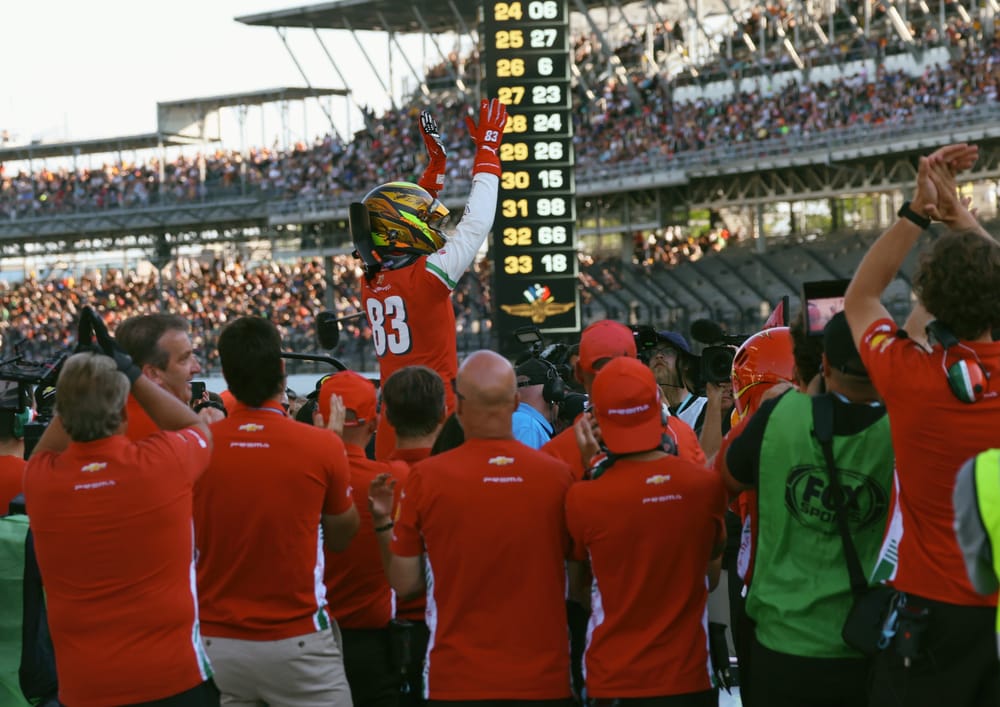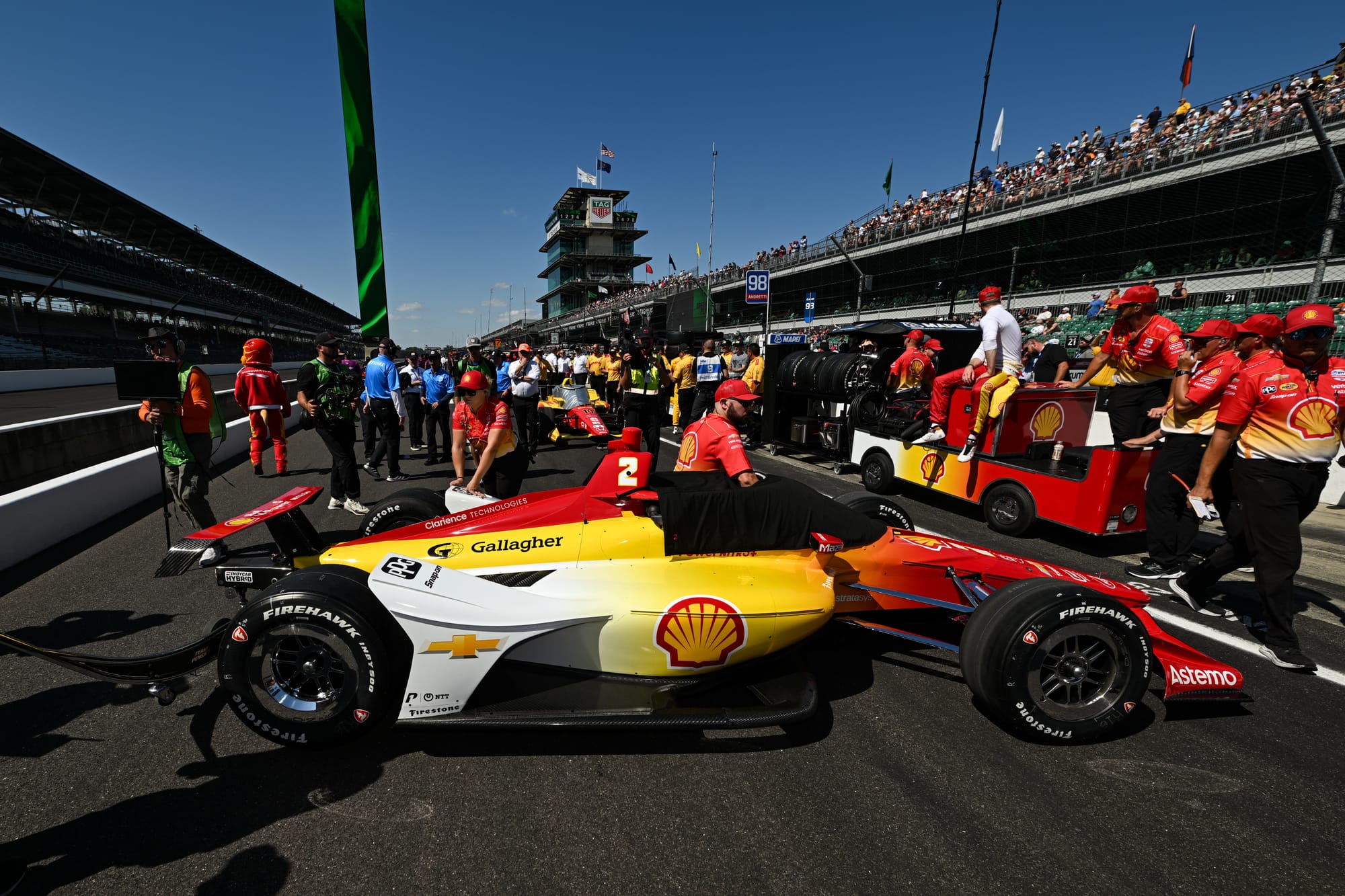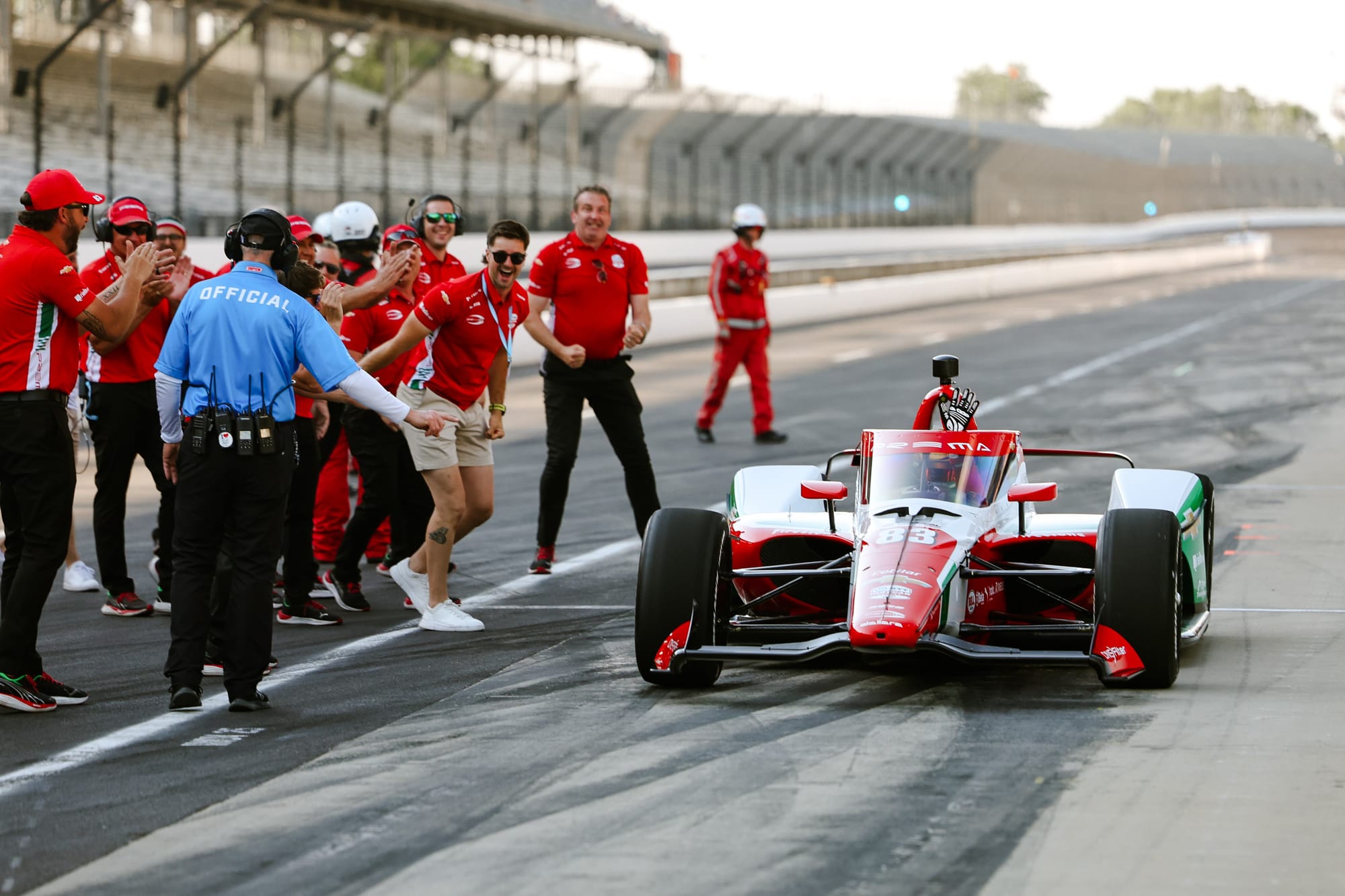He might still have an outstanding five-place grid penalty in Formula 1 that he'll probably never serve, but Robert Shwartzman will start the Indianapolis 500 from the front on Sunday.
What makes that even more impressive is he was "really worried" about making the switch to IndyCar and doing the Indy 500, which he called "one of the scariest races that I've seen" - a description, or variations of, he used multiple times.
Shwartzman is not the first to have such an opinion. His ex-Formula 2 team-mate Oscar Piastri - of whom Shwartzman says he is "waiting for when he's going to get bored from Formula 1 and he's going to come" to IndyCar so he can have a shot at avenging his 2021 F2 title loss - was asked if he'd want to do the Indy 500.
While Piastri was complimentary of the event, he said that the people who do it are "crazy" because of the speeds involved.
"I heard that Oscar, they asked him about Indy 500 and he was like, 'People who race there are crazy' and stuff like that. Well, also from my side, before coming here, I was quite scared. It looks scary!" Shwartzman tells a special episode of The Race IndyCar Podcast featuring the pole winner this week.
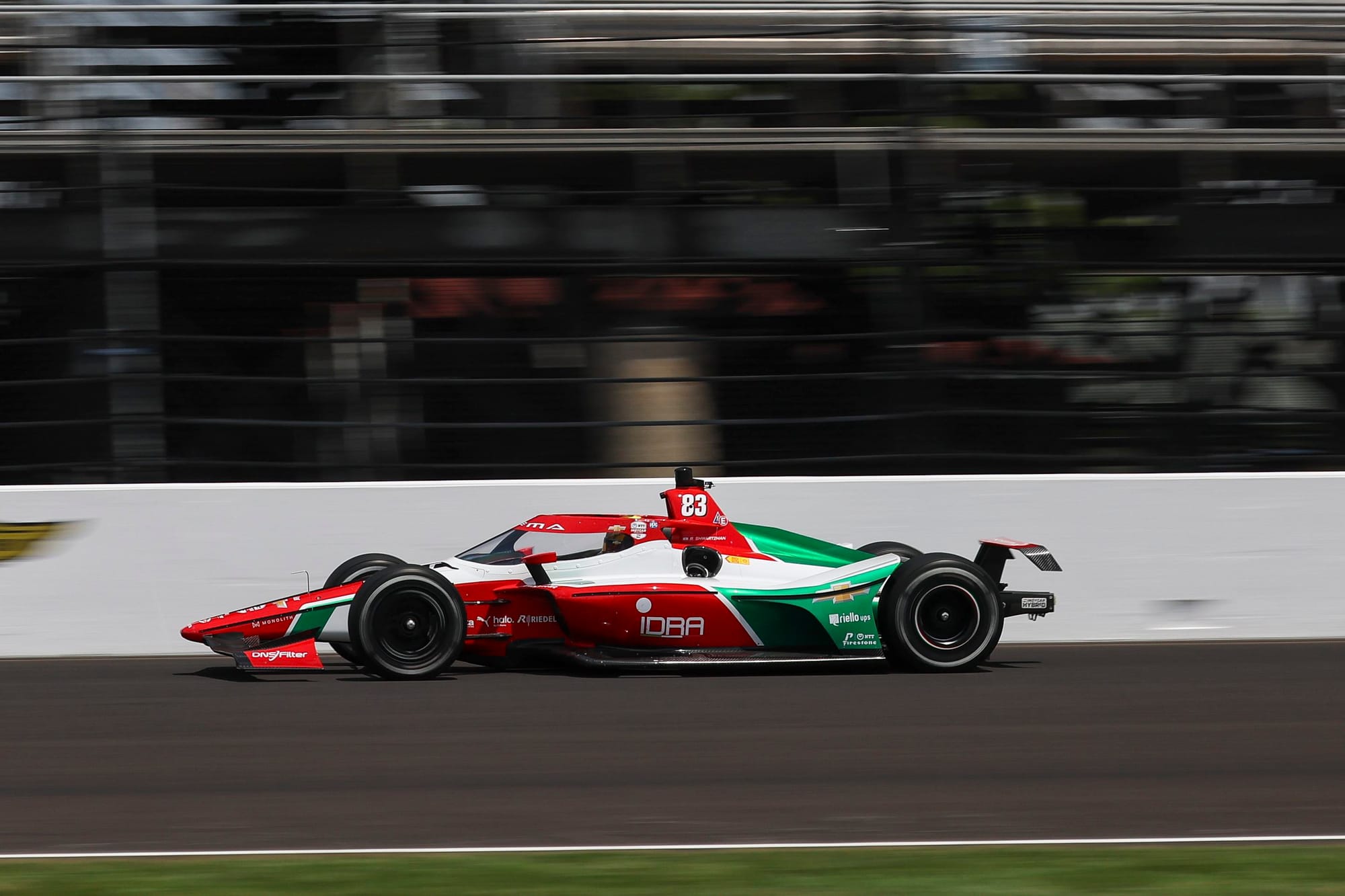
"When you start driving here, you get some more and more confidence, and you're like, 'OK, actually, you can have control of it'. It's not just a random thing. You can prepare the car, and you can feel the difference, like I can feel now really well, my balance limitation, I can predict already, how is it going to be: understeer, oversteer? And normally you're just going flat.
"Normally, when you go flat, you don't feel anything.
"But here it comes to a stage where you start to really play with the car on the edge. And I'm sure that if there is any other F1 drivers or from any other categories, at some point that they would like to join in IndyCar, they will enjoy it as much as I do."
Podcast co-host JR Hildebrand is not only a near-winner of the Indy 500 himself, but someone who actively seeks out and studies the history of the discipline too. So when he said Shwartzman's run in the Fast 12 qualifying segment was "one of the most impressive displays I've seen around this place in a long time", that's extremely high praise indeed.
Rarely has any driver turned up at the Speedway and shown such a natural ability to just find a way to make a car go fast. Juan Pablo Montoya in 2000 springs to mind where anyone watching even his rookie orientation saw that he had a natural ability to experiment and find ways to be quick.
Montoya would approve of Shwartzman's assessment that for qualifying, "you've got to just put your balls on the table: this is what I have and I just have to stick to it".
But there's far more to it than that.
A huge chunk of being successful at the Speedway is down to the car, we know this much. Shwartzman is not 20 places better on the starting grid at Indy than his team-mate Callum Ilott just on raw talent. We can assume Ilott's car just doesn't have the pace in it that Shwartzman's does.
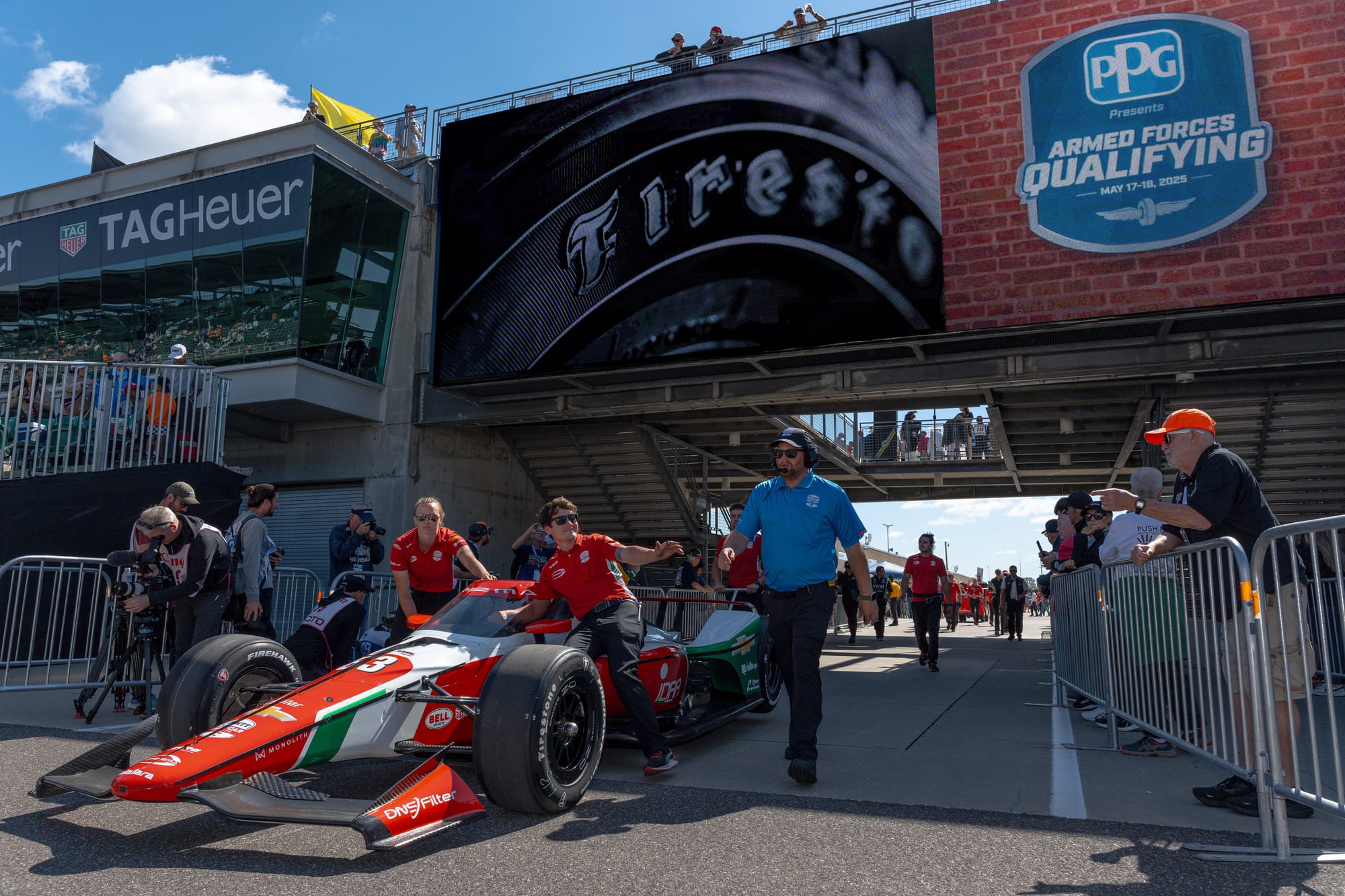
But plenty of drivers have been given cars as good as Shwartzman's and not found the limit. Shwartzman has done it without any experience of the place at all.
It might not be obvious to fans and observers, but there are different lines at the Speedway and they come with different benefits. Because the circuit is an oval, the differences are just less obvious and measured by millimetres rather than feet.
Shwartzman's shown aptitude well beyond his experience. A weird kind of 'sixth sense' feeling for the car that has almost gone out of many forms of motorsport thanks to the amount of analytics tools.
"Honestly, it's an unbelievable thing," he says, reflecting on the result.
"I still can't fully acknowledge the fact that we've managed to take the pole position here at the Indy 500 being a rookie and being with a new team. Coming here, it was just like, let's just try and do our best to not get bumped!"
On the aftermath, he adds: "I was just standing there watching the TV and seeing if the other two guys are going to manage to beat my speed and they didn't.
"And at that time, everything just became blurry because there was so much noise, everybody was just touching me, pulling me, jumping.
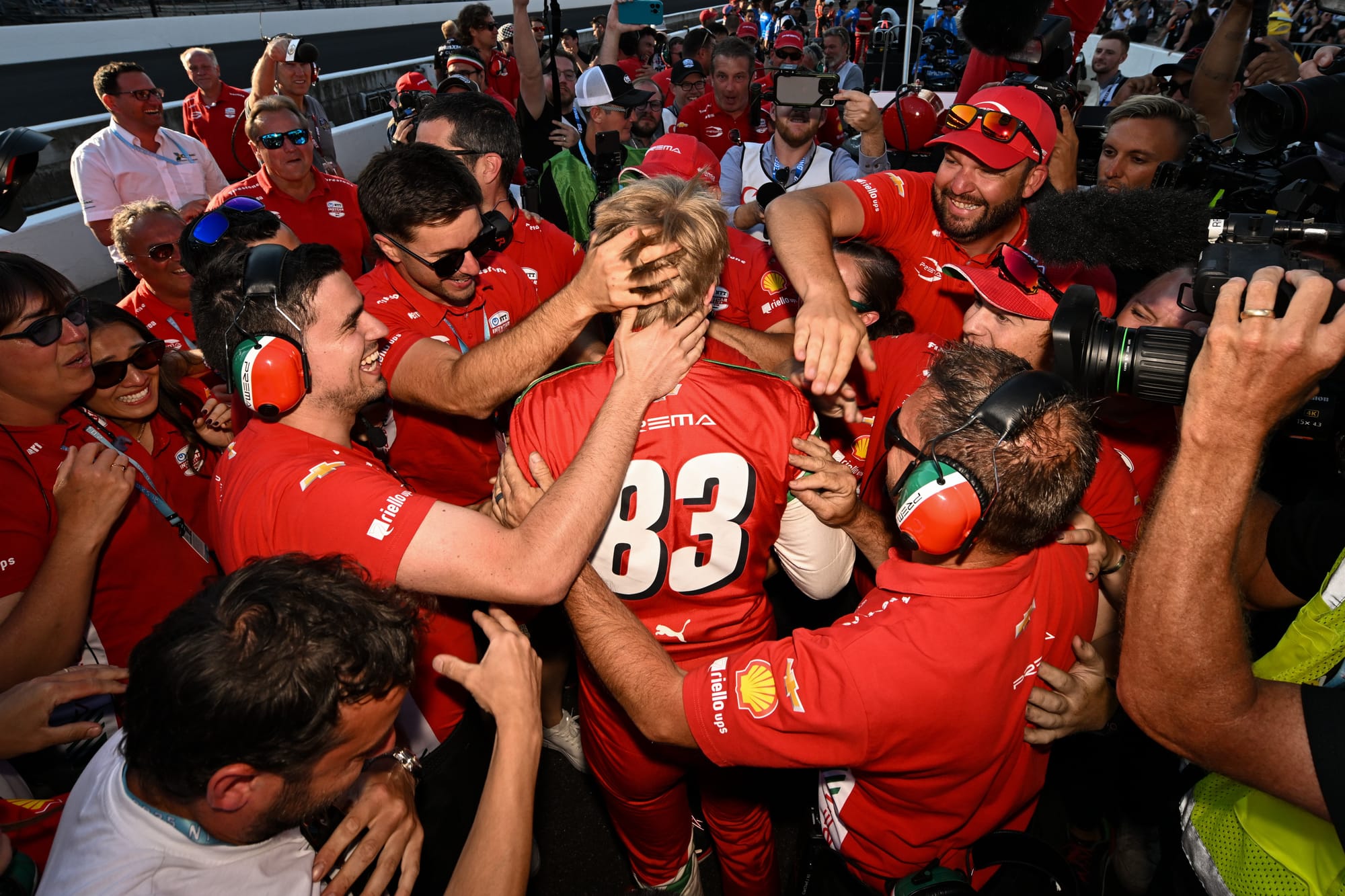
“It was like a mosh pit! 'What's going on?' I just couldn't believe it. It was amazing."
The key to delivering the result was the car peaking at the right time. The reason Hildebrand was so impressed with Shwartzman's top 12 run is because the car wasn't perfected, but his pole run was the first time he had held the car flat for all four laps. That was a big surprise.
It's an incredible achievement for Prema, which, while it is a rookie team and has plenty of rookie personnel, does also have plenty of people who know the race well, including team manager Piers Phillips (below), IndyCar race winner Ryan Briscoe advising the drivers, and Shwartzman's engineer Eric Leichtle, who worked with Josef Newgarden in 2022.
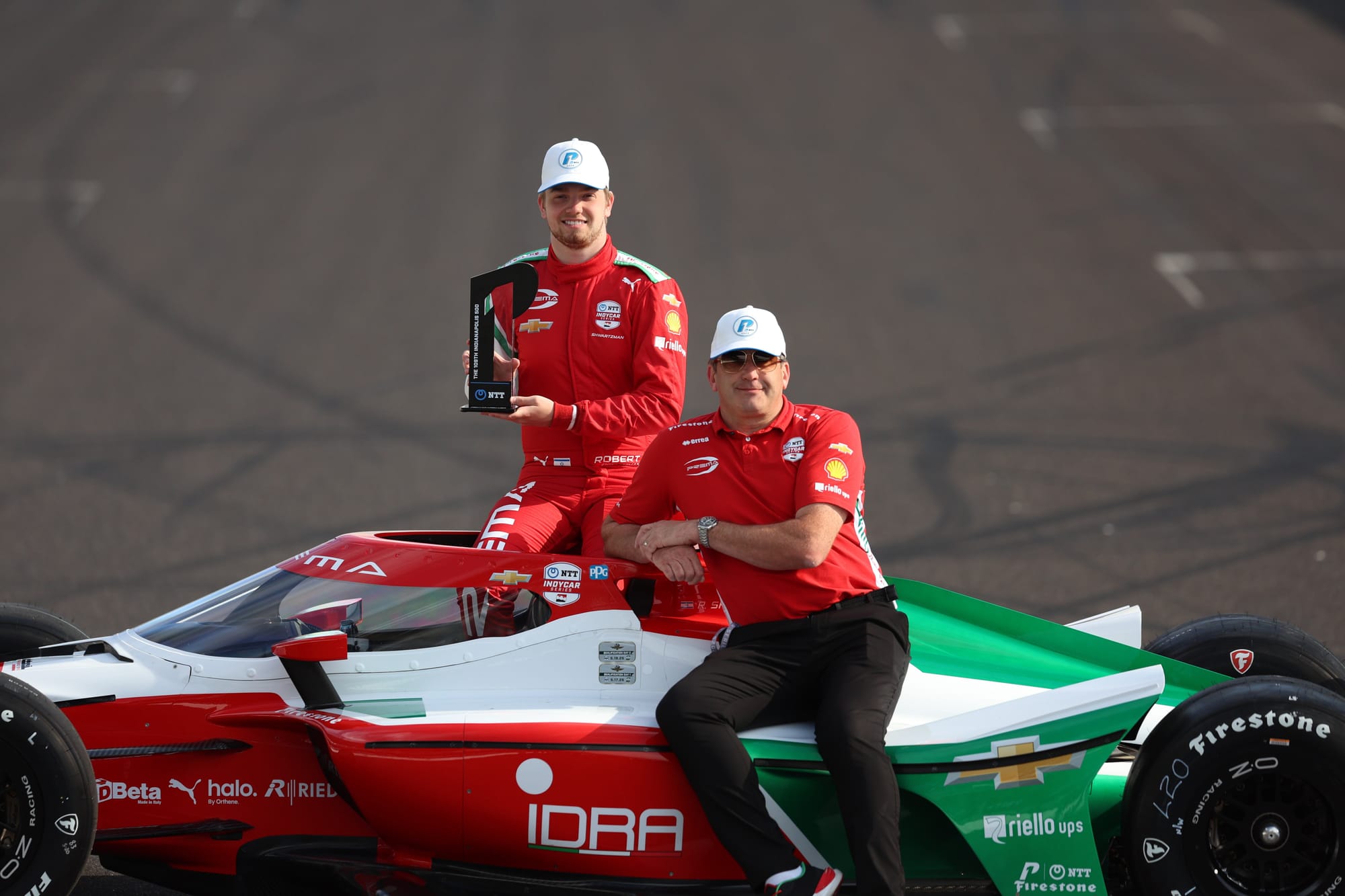
Perhaps the even bigger challenge now is for the race. Not to play the cynical journalist, but Prema is the worst team in the series at pitstops this season according to IndyCar's ranking system and this race is where pitstops matter the most.
Also, even if Prema runs the perfect strategy, other competitors or an ill-timed caution can ruin your race, with the spread over Indy 500 laps often exacerbating your issues.
Also, until Monday, Prema hadn't done a lot of race running work, so with the added weight of the hybrid this year tyre wear is going to be even worse than normal and that's going to play into the hands of the teams who know how to manage it.
Saying all of that, I would have said there was zero chance Prema could be on pole for this event, so that proves I and others can be wrong.
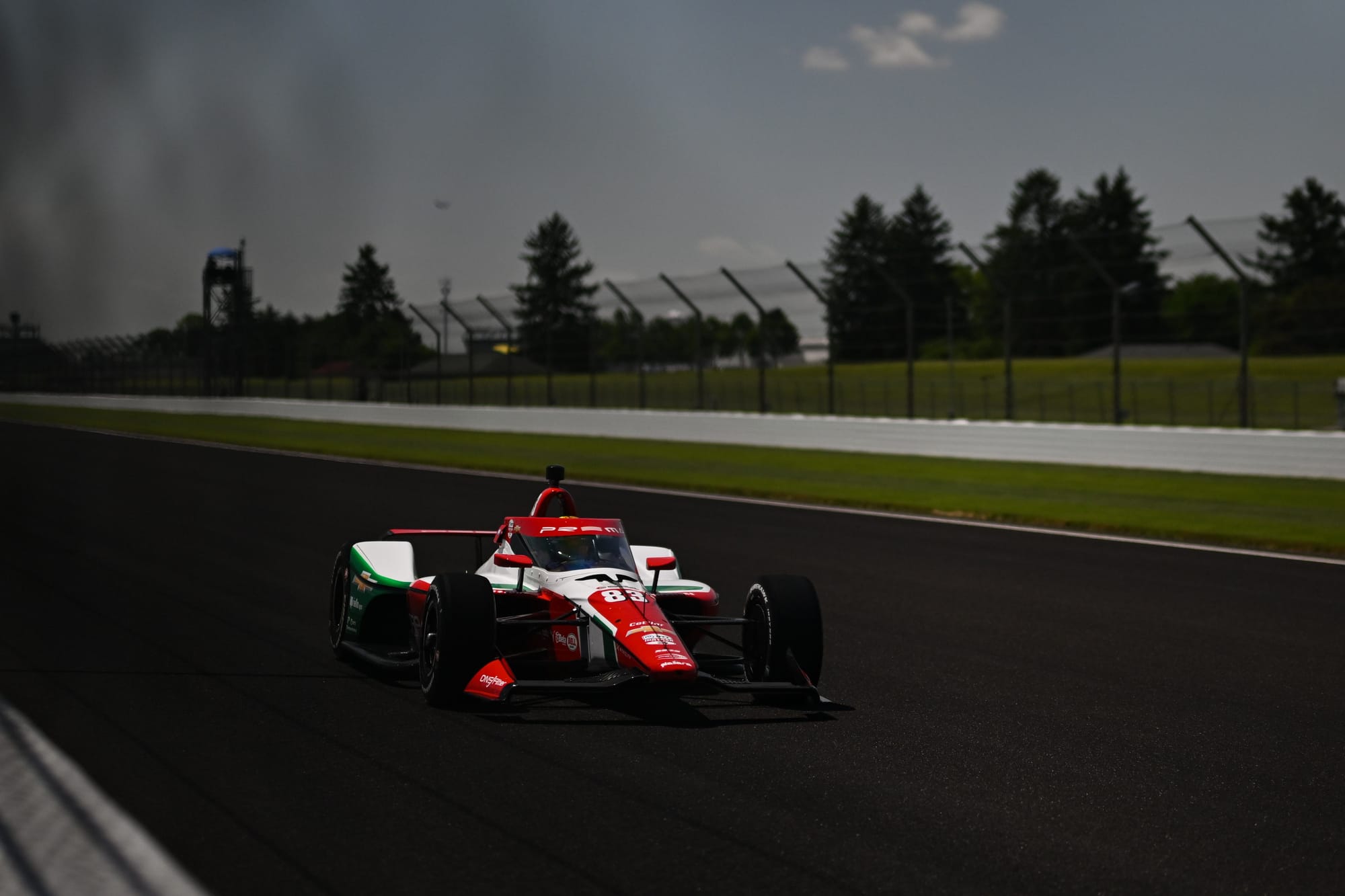
"I will certainly do my best," says Shwartzman.
"I have never raced on an oval. I don't know how it's going to feel. I certainly will do the best I can in terms of homework to prepare myself for it. We'll have some practices also to get more of a feeling with the car on a race mode, because it's going to be a different car.
“For me, Indy 500 splits in two pieces. There is one race is qualifying and one race is the actual race. And the cars are different. They're built up differently with different settings. So you're chasing different things.
So I want to believe and hope that the car is going to be as good as it was in the qualifying.
"You never know until the last lap who is going to be the winner. And even not always on the last lap, it can be the last corner as well. I will do my best, and we'll see where we're get."
Whatever happens, people will not forget this in a hurry. And Shwartzman is hoping this catapults him into form for the rest of the season too.
He's had issues in every single race weekend so far in 2025 but the last two have been strong, especially the Indy road course, where at times his race pace matched that of the leaders. It's more about pulling together qualifying and pitstops from here to create the whole package.
When he does, he'll be a threat on other tracks too.
"My target is obviously not just...Indy, it's amazing, it's unique, but also throughout the season, to improve our road course car, to get as close as possible to the top," he adds.
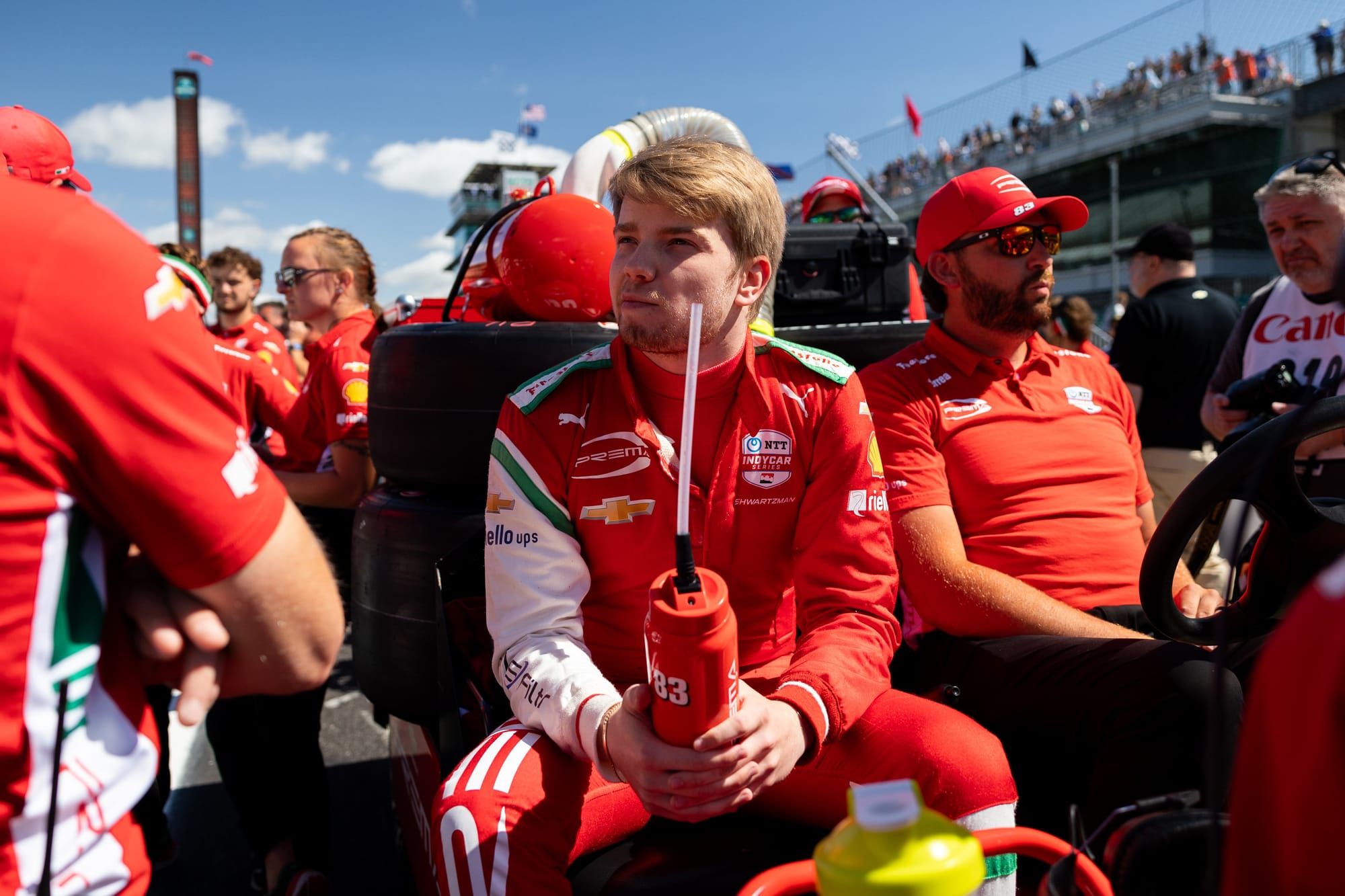
"Because I want to battle, for example, like Alex Palou, he's leading the championship with quite a margin. I want to catch up to him. I want to give him a challenge.
“It just motivates me: 'Dude, you have an easy life, I've got to make it hard for you, I want to come close and battle with you!'"
As The Race jokes on the podcast, it might take until 2028 for him to cut Palou's 2025 points advantage, which is 196 over Shwartzman.
But the fact he's thinking about that in the wake of his all-encompassing pole win shows the level of ambition Shwartzman has.
He's satisfied with the pole, but not with standing still to celebrate it. He's already thinking about fixing the weaknesses in his and Prema's game.


